Calluses on the feet can be dry or damp. They not only look not aesthetically pleasing, but also deliver painful sensations. For the treatment of corns, both pharmaceuticals and folk methods are used.
In advanced cases, home treatment is ineffective, but at the initial stage or to prevent their occurrence, you can achieve good results of treatment with folk recipes.
Types of corns
Wet corn
It appears due to mechanical action, friction of a hard surface against the skin. The first sign of a callus is tissue inflammation. Then a blister is formed at the site of injury, filled with lymphatic fluid, which is covered with a thin film of skin.
With closely spaced blood vessels, there is a high risk of rupture of one of them, then the lymphatic fluid mixes with the blood, and the callus acquires a characteristic color.
Doctors do not recommend opening the callus, as the film protects the deep layers of the skin from infection
If the callus breaks out spontaneously, it is necessary to disinfect it. With timely treatment at home, wet corn becomes dry. The film grows together with the bottom of the callus as soon as the liquid dries up, and keratinous skin forms at the site of the wet lesion on the leg.
Dry callus on the foot
The seals can be either thick or thin. Most often, the callus is localized on the toes or on the side of the foot. It looks like a dense, yellowish formation. Due to the nature of the structure, it can be unpleasant.
Corns
Formed as a result of wearing uncomfortable, crushing shoes. Corns should be classified as dry calluses. In places of pressure, the skin gradually thickens, and a rough skin formation appears. The formation process takes a long time, since the thickening of the skin occurs layer by layer.
Often these calluses are found on the heels and lateral surfaces of the big toes.
It is very difficult to treat such calluses on the legs as corns at home, since simple scraping of the keratinized skin does not give an effect and the thickening grows again
Corn with a core
It is a type of dry corn and the next stage in the development of corns.
The skin in the area of the callus coarsens unevenly: in the center, the thickening develops more massive, which causes a kind of rod, which goes into the deeper layers of the skin.
The rod can squeeze the nerve endings, then the callus becomes painful.
Corn, the root of which affects the vessels, is called vascular.
If the rod is located deeply, self-removal is traumatic. You should go to the clinic to resort to cryodestruction or laser burning.
Fibrous
A dense formation that compresses the nerve endings.The pain is so severe that it is difficult for a person not only to wear any shoes, but even to walk barefoot.
Callus
This callus does not form on the skin, but on the bone. A prerequisite for the appearance of calluses are injuries, joint diseases. A type of callus is the heel spur. It occurs as a result of strong mechanical impact from shoes or due to joint disease.
Calluses should be distinguished from warts, since not all pharmacy remedies and folk recipes help from both.
What to do if a corn bursts
It is not always possible to maintain the integrity of wet corn. Often the film breaks through on its own and the liquid flows out.
In this case, the main thing is to disinfect in time, since an open weeping wound is an excellent breeding ground for staphylococcal or streptococcal infections.
Broken callus treatment
For the procedure, iodine, furacilin solution, potassium permanganate, brilliant green, 70% alcohol, 2% hydrogen peroxide are suitable.
The procedure is performed with thoroughly washed hands. The area to be treated must also be cleaned of dirt.
It is necessary to lubricate the damaged area so that the agent does not get directly into the wound, as this will slow down tissue healing.
A bactericidal or anti-ash plaster is glued to the treated area. It protects the wound from bacteria and absorbs the remaining lymphatic fluid.
If you follow another method, then you need to lubricate the corn with salicylic ointment or coniferous resin and apply a sterile bandage.
Is it possible to pierce
If the wet corn is of a significant size and is located in a place that is exposed to mechanical stress, it brings serious inconvenience.
In this case, it can be pierced, but it is imperative to follow a few rules:
- Hands must be thoroughly washed with soap, you can additionally use an antibacterial gel.
- The puncture is made with a disinfected needle. To disinfect the instrument, it is calcined over a fire or washed in alcohol. Disinfection should take place within a few minutes.
- The place of damage is also disinfected by wiping with an alcohol solution, iodine or brilliant green.
- Gently puncture, keeping the needle almost parallel to the skin. It is important not to touch the bottom of the callus with the instrument, as this will lead to serious inflammation.
- To enhance the outflow of fluid, you need to make several punctures, but so that the skin does not break completely. The surface must be relatively intact so that it can protect delicate skin from infection.
- Then a sterile napkin is applied to the corn and the corn is pressed down. The liquid will drain and the top skin will stick to the bottom of the corn.
- An antibiotic ointment is applied to the wound, then the damaged area is covered with a plaster. The patch must be changed 2 times a day and removed at night. When exposed to air, the corn will dry out faster.
Signs of wet callus infection
In the absence of proper home treatment, a bursting callus on the leg becomes easily infected, since the loose, delicate skin under the upper film of wet callus is a suitable breeding ground for infection. However, the infection penetrates not only into an open wound, but also into a closed one.
Common signs of infection are as follows:
- The surrounding tissues become inflamed, redden.
- The damaged area hurts a lot.
- The lymphatic fluid becomes cloudy.
- Purulent contents are released.
- The area of the callus is covered with yellow crusts.
- The body temperature rises.
It is necessary to open the callus on the leg, if infection does occur, remove the skin covering the inner space, disinfect, apply an antibacterial ointment, cover with a sterile bandage. Treatment at home is not continued if the condition worsens, but they go to the doctor, since in such cases, drug treatment is required.

 Don't miss the most popular column article: Morning exercises for those over 40, 50. Gymnastics exercises for weight loss, video tutorials.
Don't miss the most popular column article: Morning exercises for those over 40, 50. Gymnastics exercises for weight loss, video tutorials.Callus treatment
How to treat a callus on the foot
Calluses are often formed on the foot. A course of steaming baths with soda and soap will help soften the hardened skin.
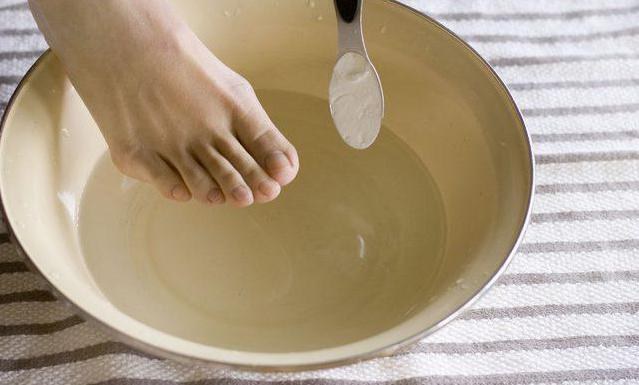
For 1 liter of water with a temperature of about 40-45 degrees, take 1 tbsp. soda and a little soap. Dissolve the components in water and immerse your feet in water for half an hour. After steaming, the legs should be treated with a pumice stone. It is recommended to do such baths every day for a week.
After the bath, compresses are used, prepared according to folk recipes, for example, based on raw potatoes or bread crumb. They will be discussed in detail below.
How to treat a callus on your toe
A callus is caused by wearing uncomfortable shoes, especially shoes, because the pressure of the body's weight is right on the toes. For the duration of treatment, such shoes should be discarded. A plaster with salicylic acid helps with calluses on the finger.
Corn Treatment Sequence:
- First, the legs are steamed in a soap and soda bath.
- After steaming, a salicylic patch is glued to the damaged skin, which is worn for 2 days.
- After removing the patch, the corn will soften. All that remains is to clean it off with a pumice stone and lubricate the skin with a moisturizer.
Heel callus treatment
In this area, calluses can be both wet and dry formations, often of the rod type. It is recommended to use an anti-corn ointment compress.
Corn Treatment Sequence:
- The corn area needs to be disinfected.
- Then they take an ordinary adhesive plaster, cut a hole in it so that the areas around the callus are covered with a plaster, and the callus itself remains open.
- Stick the patch in place.
- Apply a callus ointment to the skin.
- A larger piece of adhesive plaster is glued on top.
The compress should be worn for 1-2 days, after which the corn will soften so much that it will exfoliate on its own.
Callus plasters
Any plaster protects the damaged area from the penetration of infection, reduces soreness during mechanical action. But for dry and wet corns, you should choose different plasters, since some plasters are more effective in treating dry corns, others in treating wet ones.
Compid
There are several types of plasters on sale: from wet, dry, ingrown corns. The tape is packed in a convenient box.
According to reviews, the plaster always copes with its task, accelerates healing, relieves corns. In addition, the material of the patch is translucent, so it is almost invisible on the leg.
Plasters of various shapes, according to the location of the corn. The manufacturer forbids cutting them. This is convenient if you buy the patch separately for each case, but if the corns are located in different places, you will have to buy different packages. Lack of funds in significant cost: more than 200 rubles for 5 pieces.
Salipod
A good remedy for getting rid of old dry calluses. It contains salicylic acid, which softens dead skin.
The plaster is glued after the steaming bath, fixed with the adhesive plaster included in the kit, and worn for two days.
The patch does not always stay on the skin for two days. If it comes off and the effect is not achieved, it should be replaced. Under the influence of the active substance, the corn turns white and exfoliates. The price of the patch is about 60 rubles.
Silkoplast
The manufacturer "Pharmaplast" offers plasters of various shapes in one package.
It:
- universal moisture resistant bactericidal plasters impregnated with silver ions;
- specialized anti-ash (hydrocolloid) for wet corns, which are similar to similar products of the Kompid brand.
The hydrocolloid patch absorbs the lymphatic fluid, turning it into a gel. The moist environment formed by the patch promotes healing.
The package contains 6 plasters. The price is 300 rubles. It is convenient to stick the bactericidal plasters on the corn if there are no other means at hand. The package contains several plasters of different shapes. They disinfect the wound thanks to silver ions. The cost of packaging is 100 rubles.
Scholl
The patch is a silicone pad with adhesive edges around it, which are completely transparent. The plaster is expensive (over 300 rubles).
The reviews are contradictory: one it helps to heal bleeding calluses, does not come off for several days even with daily shower, others say that it does not adhere well to the skin.

 Don't miss the most popular column article: Laser hair removal on the face and body - how it is carried out, efficiency, before and after photos, contraindications.
Don't miss the most popular column article: Laser hair removal on the face and body - how it is carried out, efficiency, before and after photos, contraindications.Callus creams and ointments
Callus creams and ointments are easy to use, but you need to apply them carefully, since the active ingredients that make up the composition irritate healthy skin. The agent is applied directly to the corn itself, and the surrounding tissues are protected with adhesive tape or petroleum jelly.
Among the components of anti-ash creams and ointments there are: salicylic and benzoic acid, urea, lactic acid, vitamins A and E, tea tree oil, aloe extract and others. Before applying the cream, you need to steam the skin of the legs with a soda bath. Then the effect will be more noticeable.
Bensalitin
The composition contains both salicylic and benzoic acids. The ointment is intended for the treatment of corns. She softens them. It should be applied to the affected area, after having lubricated the surrounding tissues with petroleum jelly to protect them from the effects of the active substance. Then a patch is glued on top. It costs 60 rubles.
Super Antimozolin
A product based on carbamide and lactic acid. Has a softening effect.
The drug is applied to cleansed skin, after which the area should be covered with a film and sealed with a plaster. After a while, keratinized skin can be removed with a cosmetic spatula. Price - 90 rubles.
Pasta "5 days"
Contains petroleum jelly, lanolin, salicylic acid.
Apply the product to steamed skin for 12 hours. After that, the corn should separate from the healthy skin. If this does not happen, the procedure is repeated again.
Salicylic ointment
This is the most inexpensive remedy (only 30 rubles), which effectively fights old calluses. It helps with both dry and wet calluses. Ointment dries wet calluses, softens dry ones. Has a healing effect. It is also suitable for removing warts.
Namosol
The ointment helps with corns. This product is in the same price range as salicylic ointment.
Reviews are conflicting. Not everyone likes the method of application: you need to glue a plaster with a slot on the corn, then apply ointment and glue the slot on top.
It is inconvenient to wear a compress on the leg for 2 days, as required by the instructions, especially in the summer. But those who follow the instructions are satisfied with the product. It fully copes with its tasks.
Centenary cream
The cream contains many herbal components: extracts, essential oils, salicylic acid and petroleum jelly are also contained.
The cream helps especially well after a course of steaming baths, followed by treatment with pumice and applying cream. Price - 80 rubles.
Bottega verde
Sold in a 50 ml jar, for which you need to pay more than 300 rubles. Made in Italy. According to reviews, this is one of the best creams that helps get rid of neglected calluses on the legs in a week due to the content of 25% urea.
Of the minuses: the product is absorbed for a long time, so it is recommended to apply it at night.
Cream "Green Pharmacy"
The cream is not bad.But to achieve a significant result, you should use it systematically. This is a skin care moisturizer that is not suitable for emergency treatments. Price - 60 rubles.
Traditional methods
Folk remedies prepared at home help from wet calluses on the legs, corns, but are ineffective in treating core formations, since the formulations are not so aggressive as to affect the deep layers of the skin.
If calluses appear on the legs, the following recipes will tell you how to treat wet and dry formations at home:
- Chop 1 onion and raw potato with a grater or blender. Then the components are mixed, placed on one half of the gauze, folded in half, covered on top with the other half. Apply overnight to the corn, fixing the bandage with a plaster.
- Legs are steamed in a hot bath with soda and soap. Propolis is warmed up in the palms, kneaded, then applied to the corn and sealed with a plaster. After 3 days, the old plaster is peeled off and replaced with a new propolis plaster. Glued back onto the steamed leather.
- Dry corn will be helped by a crumb of bread dipped in acetic acid. First you need to roll it into a tight ball, then moisten it in vinegar and apply to the corn. Slight burning and redness is a normal reaction. After a few hours, the hardened layers of the skin will begin to flake off.
- Aloe, Kalanchoe or money tree leaf must be peeled from the top layer and applied to the corn, fixed for several hours. For convenience, it is optimal to apply such a compress at night. The procedure can be repeated until the callus disappears completely.
- For wet and dry corn, apply a compress made from a mixture of fish oil and aloe juice in equal proportions. The ingredients are mixed and left for half an hour. Then a cotton pad is impregnated with the composition and applied to the sore spot. Seal the top with a plaster and leave overnight. In the morning, you need to wipe the skin with chamomile decoction. It will cleanse the skin of homemade ointment and provide an additional antiseptic effect.
- Infusion of garlic and onion peels in vinegar allows you to quickly get rid of both dry and wet corns. 5 heads of garlic, without peeling, need to be poured into a jar, peeled from 5 large onions, added to the garlic and covered with vinegar so that all ingredients are immersed in liquid. Then the jar is closed and left to infuse in a dark place for 2 weeks. Then they take out the husk and apply it to the calluses at night.
- A compress from grated tomato, due to the acid contained in the composition, is also successfully used. It is necessary to chop the sour tomato, put it on the corn, cover it with a bandage on top. The tool is used daily until the corn disappears.
- Apply lemon zest to the corns with the yellow side, after steaming the skin and making several cuts on the peel. You need to keep the compress for 2 days, and after another two days, repeat the procedure.
- It is easy to get rid of corns if you regularly lubricate the corns with juice from a freshly cut stem of celandine. The corn will come off in 2-3 weeks. A more refined recipe: Mix 1 part plant sap and 4 parts petroleum jelly. Use the composition before going to bed as an ointment.
- The prunes should be boiled in milk and, while it has not cooled, applied to the corn. The compress is changed to a new one as it cools. The duration of the procedure is 30 minutes.
- Baths with calendula and chamomile will help disinfect and soften the rough skin. 1 tbsp mixtures of plants are brewed with 1 tbsp. boiling water. The composition is insisted for half an hour, then added to a basin of water prepared for a foot bath.
- Old calluses on the feet are treated with an apple cider vinegar bath. Add 2-3 tablespoons to hot water (so that the legs endure). apple cider vinegar (you can use homemade apple cider vinegar). The legs are steamed, and as soon as the water cools down, the softened skin is scraped off with a pumice stone. Lubricate the hardened areas with salicylic ointment and put on socks.The course of procedures is daily for 1-2 weeks.
To achieve the best result, it is recommended to combine pharmacy and folk remedies and do not quit treatment until a lasting effect is achieved.
It is necessary to objectively assess the complexity of the problem, and consult a doctor if there is no improvement or an inflammatory process is observed.
Useful video materials on how to cure calluses on the feet at home
How to properly and safely treat calluses on the feet:
How to cure calluses on your feet at home:
Callus on the toe. How to quickly cure at home:
https://www.youtube.com/watch?v=zlf7yqAJi4k

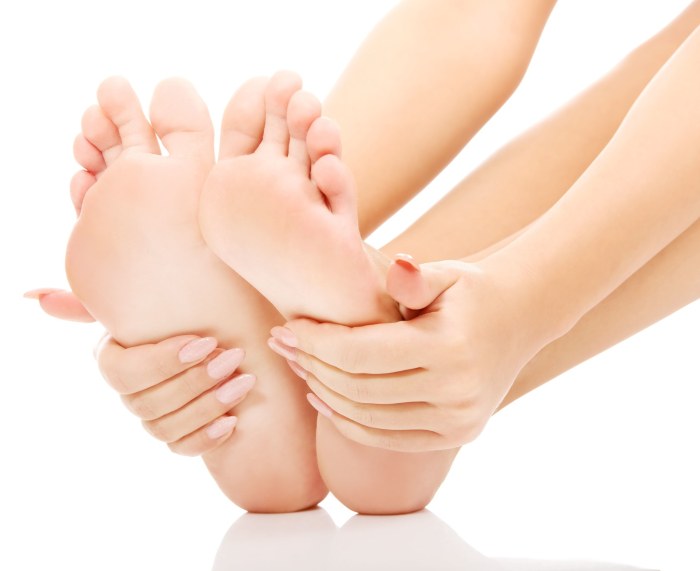
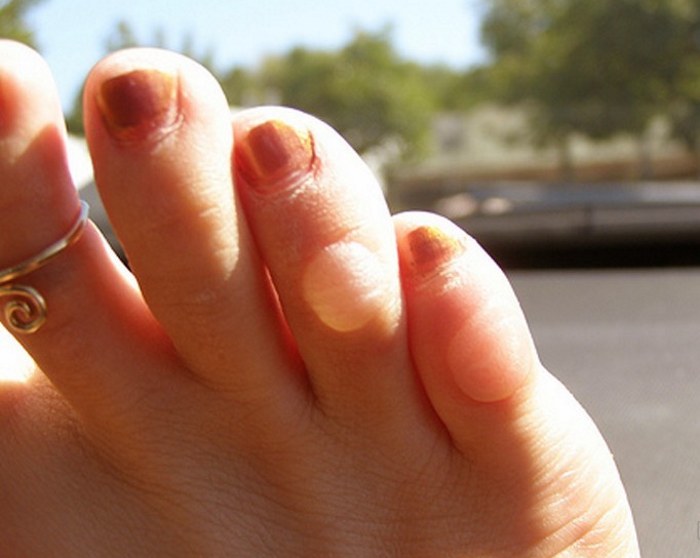
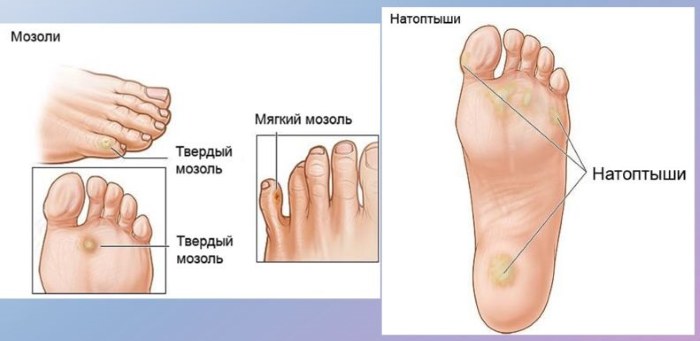
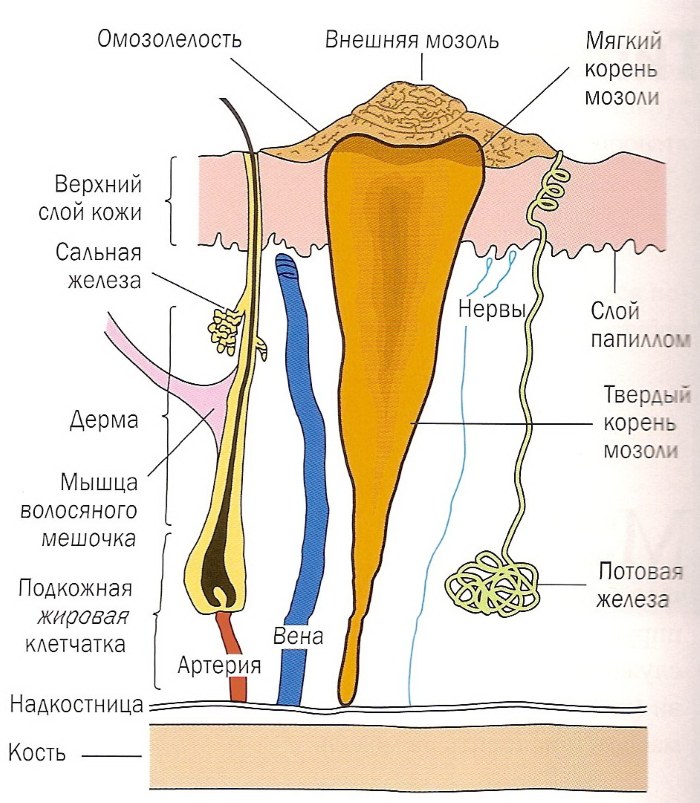
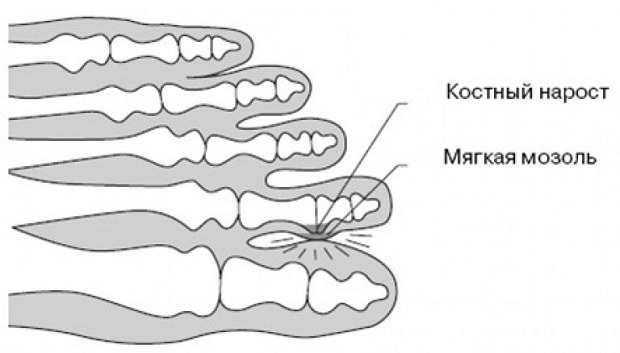
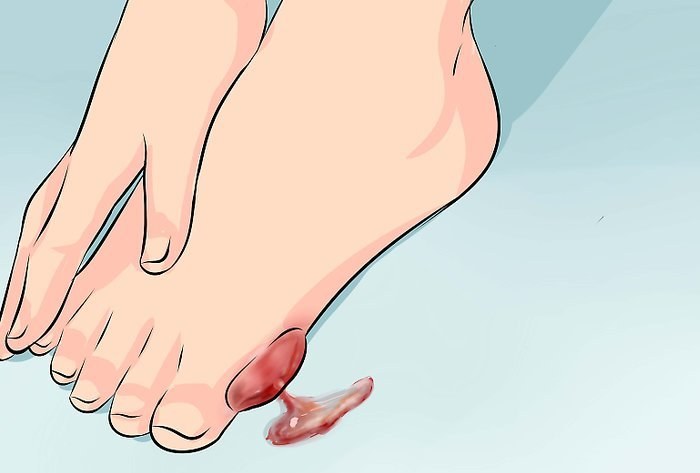
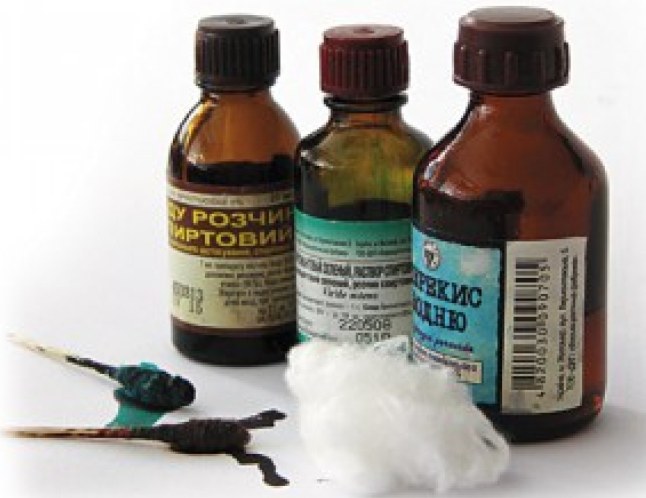
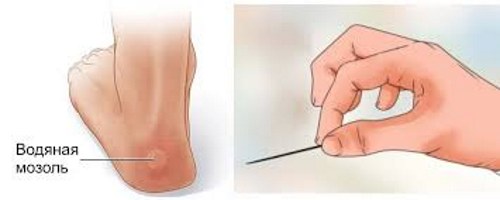
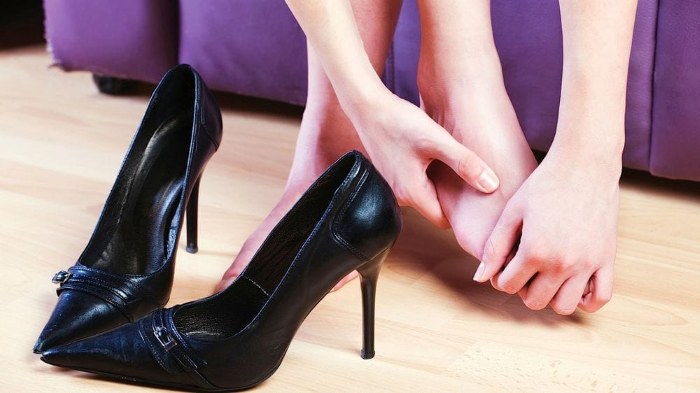
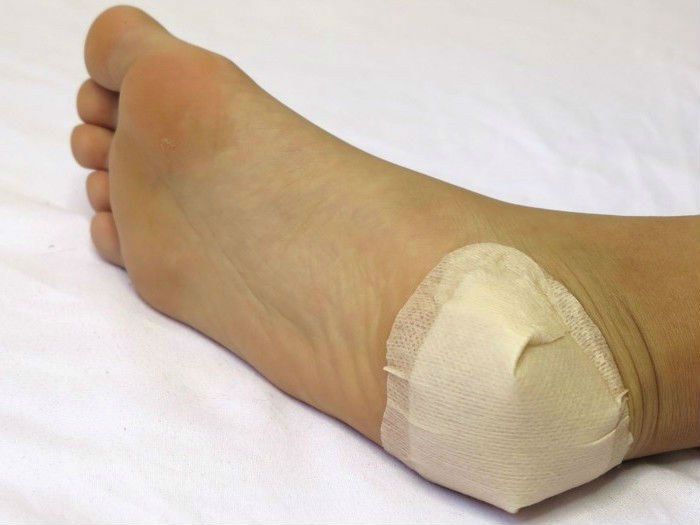
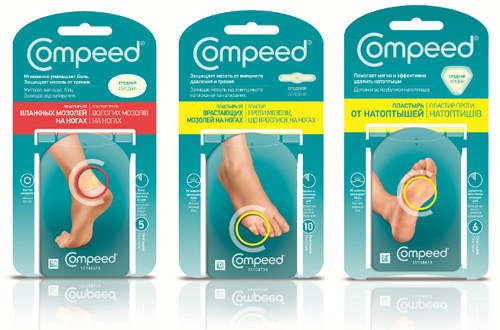
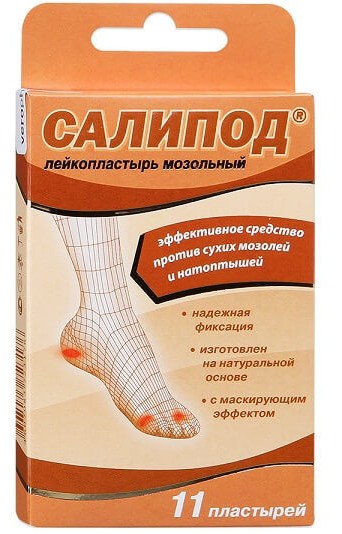
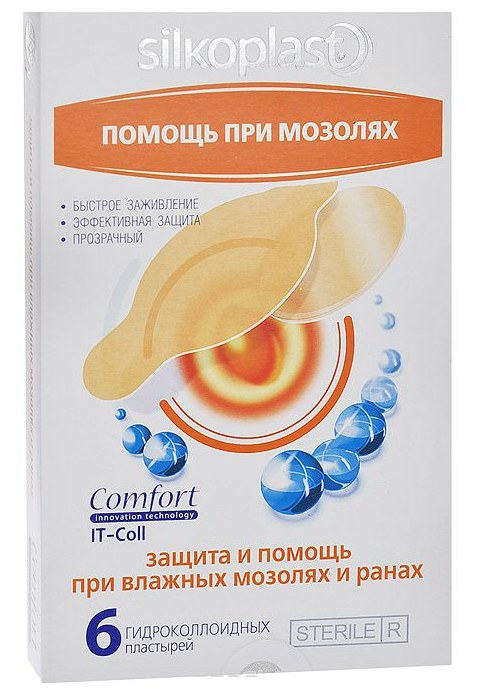
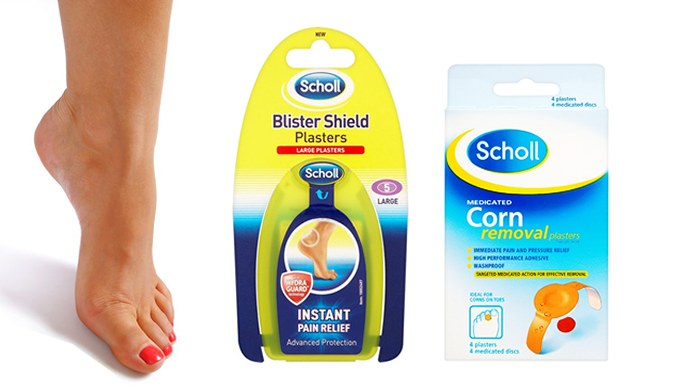
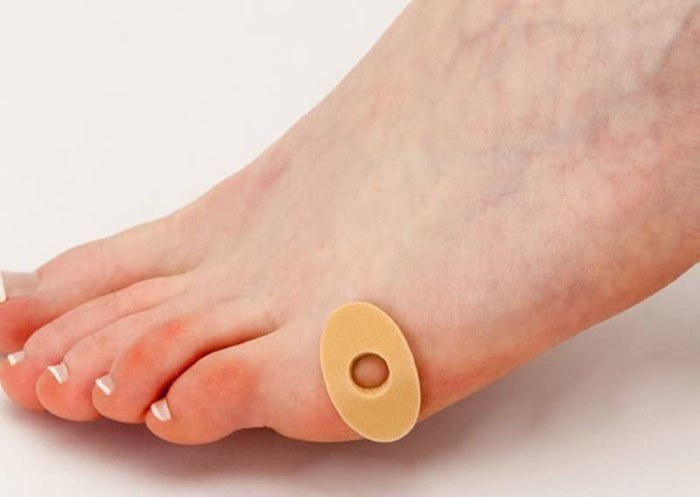
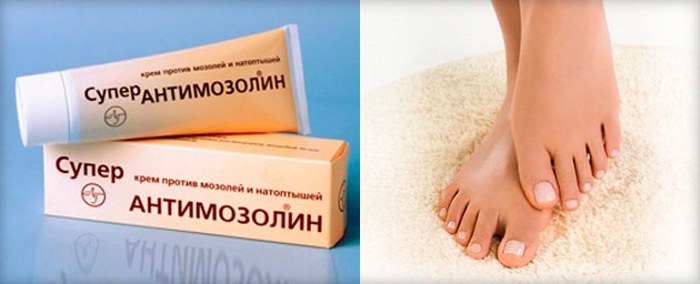
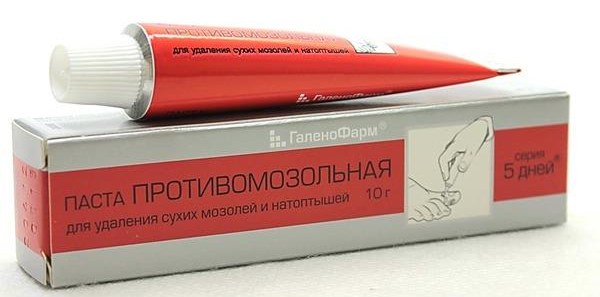
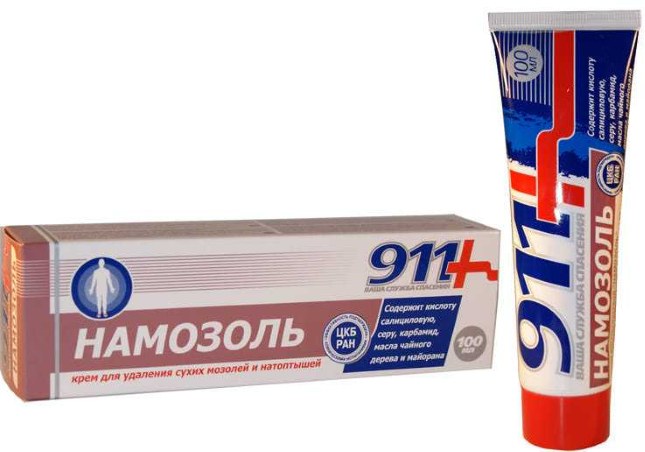
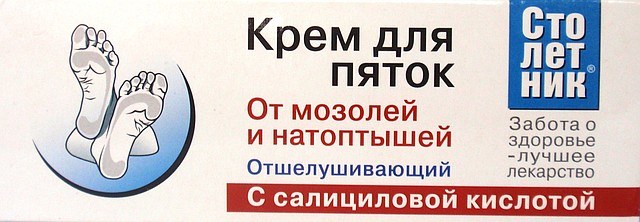
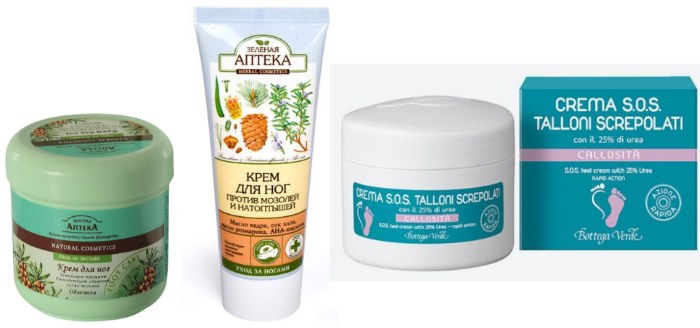
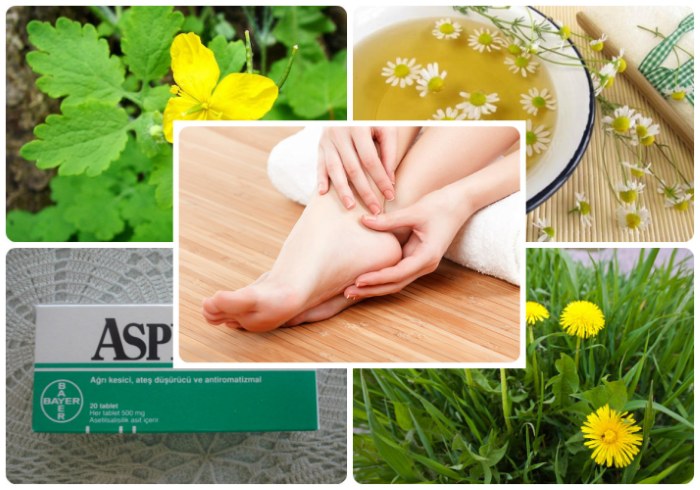
I have a perpetual problem with callosities on the sole. I save myself with a compress from grated onion